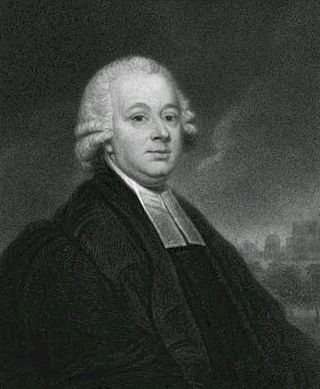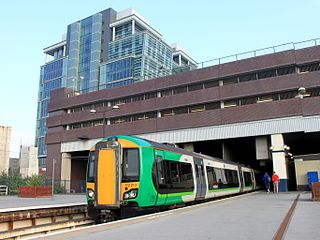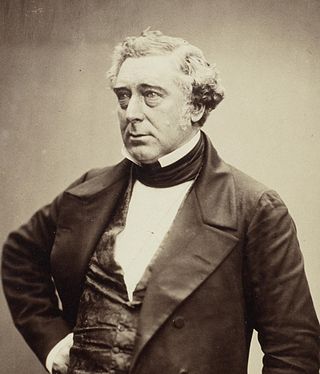
John Harrison was an English carpenter and clockmaker who invented the marine chronometer, a long-sought-after device for solving the problem of calculating longitude while at sea.

Nevil Maskelyne was the fifth British Astronomer Royal. He held the office from 1765 to 1811. He was the first person to scientifically measure the mass of the planet Earth. He created The Nautical Almanac, in full the British Nautical Almanac and Astronomical Ephemeris for the Meridian of the Royal Observatory at Greenwich using Tobias Mayer's corrections for Euler's Lunar Theory tables.

The longitude rewards were the system of inducement prizes offered by the British government for a simple and practical method for the precise determination of a ship's longitude at sea. The rewards, established through an Act of Parliament in 1714, were administered by the Board of Longitude.

Greenwich is a town in south-east London, England, within the ceremonial county of Greater London. It is situated 5.5 miles (8.9 km) east-south-east of Charing Cross.

The West Coast Main Line (WCML) is one of the most important railway corridors in the United Kingdom, connecting the major cities of London and Glasgow with branches to Birmingham, Liverpool, Manchester and Edinburgh. It is one of the busiest mixed-traffic railway routes in Europe, carrying a mixture of intercity rail, regional rail, commuter rail and rail freight traffic. The core route of the WCML runs from London to Glasgow for 399 miles (642 km) and was opened from 1837 to 1869. With additional lines deviating to Northampton, Birmingham, Manchester, Liverpool and Edinburgh, this totals a route mileage of 700 miles (1,127 km). The Glasgow–Edinburgh via Carstairs line connects the WCML to Edinburgh. However, the main London–Edinburgh route is the East Coast Main Line. Several sections of the WCML form part of the suburban railway systems in London, Coventry, Birmingham, Liverpool, Manchester and Glasgow, with many more smaller commuter stations, as well as providing links to more rural towns.

Marylebone station is a Central London railway terminus and connected London Underground station in the Marylebone area of the City of Westminster. On the National Rail network, it is also known as London Marylebone and is the southern terminus of the Chiltern Main Line to Birmingham. An accompanying Underground station is on the Bakerloo line, sited between Edgware Road and Baker Street in Transport for London's fare zone 1.

The London and Birmingham Railway (L&BR) was a railway company in the United Kingdom, in operation from 1833 to 1846, when it became part of the London and North Western Railway (L&NWR).

Birmingham Snow Hill, also known as Snow Hill station, is a railway station in Birmingham City Centre. It is one of the three main city-centre stations in Birmingham, along with Birmingham New Street and Birmingham Moor Street.

Robert Stephenson FRS HFRSE FRSA DCL was an English civil engineer and designer of locomotives. The only son of George Stephenson, the "Father of Railways", he built on the achievements of his father. Robert has been called the greatest engineer of the 19th century.

Watford is a town and borough in Hertfordshire, England, 15 mi (24 km) north-west of Central London, on the banks of the River Colne.

Watford Junction is a railway station that serves Watford, Hertfordshire. The station is on the West Coast Main Line (WCML), 17 miles 34 chains (28 km) from London Euston and the Abbey Line, a branch line to St Albans. Journeys to London take between 16 and 52 minutes, depending on the service. Trains also run to Clapham Junction and East Croydon, via the West London Line. The station is a major hub for local bus services and the connecting station for buses to Warner Bros. Studio Tour London – The Making of Harry Potter. The station is located north of a viaduct over the Colne valley and immediately south of Watford Tunnel.

Admiral of the Fleet Sir Cloudesley Shovell was an English naval officer. As a junior officer he saw action at the Battle of Solebay and then at the Battle of Texel during the Third Anglo-Dutch War. As a captain he fought at the Battle of Bantry Bay during the Williamite War in Ireland.

The Chiltern Main Line is a railway line which links London (Marylebone) and Birmingham, the United Kingdom's two largest cities, by a 112-mile (180 km) route via High Wycombe, Bicester, Banbury, Leamington Spa and Solihull.
Denbigh is a district in Milton Keynes, Buckinghamshire, England, to the north of Fenny Stratford and on the eastern side of the West Coast Main Line. It is in the civil parish of Bletchley and Fenny Stratford and is categorised by the Office for National Statistics as part of the Bletchley built-up area. The A5 forms its eastern and northern boundary; parts of Bletcham Way and Saxon St form its southern boundary. The overall district has five sub districts, divided by Watling St/Denbigh Rd, the 'uptick' of Bletcham Way and Grafton Street, and Saxon Street northbound. The district names are planning designations that have persisted without ever being changed to the style "North Denbigh" etc. as is the norm elsewhere in Britain.

Admiral John Henry Godfrey CB was an officer of the Royal Navy and Royal Indian Navy, specialising in navigation. Ian Fleming is said to have based James Bond's boss, "M", on Godfrey.
The Oxford, Witney and Fairford Railway was a single track railway branch line, 22 miles (35 km) long, in Oxfordshire and Gloucestershire. It was opened in succession by two companies, the first in 1861 to connect the important woollen town of Witney to the main line network, and the second in 1873 as the rump of an ambitious scheme to connect to Cheltenham, but which ran only between Witney and Fairford. The junction with the main line was at Yarnton, north of Oxford.

Denbigh Hall railway station was a temporary terminus station on the London and Birmingham Railway in the Denbigh area of what is now Milton Keynes in Buckinghamshire, England. It was situated about 1 mile (1.6 km) north of Bletchley railway station, near a point where the railway crossed Watling Street. It was open for less than six months, between April and September 1838.
Businessman Clifford Coombs took over as Birmingham chairman in 1965, and appointed Stan Cullis as manager. Cullis's attractive football took them to cup semi-finals, but league football needed a different approach. Successor Freddie Goodwin produced a team playing skilful, aggressive football that won promotion to the First Division as well as reaching an FA Cup semi-final. Two years later, the club raised money by selling Bob Latchford to Everton for a British record fee of £350,000, but without his goals the team struggled. In 1979, with relegation a certainty, the club sold Trevor Francis to Nottingham Forest, making him the first British player transferred for a fee of £1 million; Francis had scored 133 goals in 329 appearances over his nine years at Birmingham. Jim Smith took Birmingham back to the top tier, but a poor start to the 1981–82 season saw him replaced by Ron Saunders of league champions Aston Villa. The team still lacked goals, and were relegated in 1984. The last home game of the 1984–85 promotion season was marred by rioting and the death of a boy when a wall collapsed; the events formed part of the remit of the Popplewell inquiry into safety at sports grounds. Saunders quit after FA Cup defeat to non-League team Altrincham, staff were laid off, the training ground was sold, and by 1989 Birmingham were in the Third Division for the first time in their history.

Watford railway station was a railway station in Watford, Hertfordshire in the UK. It was opened by the London and Birmingham Railway (L&BR) and it was the first railway station to open in Watford. It closed in 1858 when it was replaced by Watford Junction railway station. Today the small ticket office is still standing and it is a Grade II listed building.

Primrose Hill Tunnel is a 1,164-yard (1,064 m) railway tunnel on the West Coast Main Line, approximately 2 miles (3.2 km) from Euston station. It is located in South Hampstead in the London Borough of Camden, just north of Primrose Hill park and consists of two bores: the slow line to the northern side, driven through the London clay by the engineer Robert Stephenson for the London and Birmingham Railway in 1838, and the fast line to its south, added by the London and North Western Railway in 1879. The original tunnel's Italianate portals were designed by William Budden and later replicated for the fast line. The western portals have been listed at Grade II and the eastern at Grade II* since 1974.
















